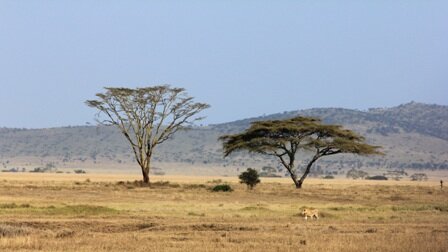These following facts about the African Savanna might give you much information what kind of African Savanna is. The African Savanna is a tropical grassland with warm temperatures year-round and with its highest seasonal rainfall in the summer. The savanna is characterized by grasses and small or dispersed trees that do not form a closed canopy, allowing sunlight to reach the ground. The African savanna contains a diverse community of organisms that interact to form a complex food web. To get to know more about this savanna, here are some facts about the African Savanna you might like.
Facts about the African Savanna 1: Community
A community is a group of organisms interacting in a specific region under similar environmental conditions. A food chain is a group of organisms linked in order of the food they eat, from producers to consumers, prey to predators, and scavengers to decomposers.
Facts about the African Savanna 2: Food Chain
Food chains show only one path of food and energy through an ecosystem. In most ecosystems, organisms can get food and energy from more than one source, and may have more than one predator.
Facts about the African Savanna 3: Well-balanced Ecosystem
Healthy, well-balanced ecosystems are made up of multiple, interacting food chains, called food webs: carnivores, scavengers and humans.
Facts about the African Savanna 4: Rainfall Season
Annual rainfall in the African Savanna is about the same as that of Wisconsin. During the rainy season, beginning in May and ending in November, they get fifteen to twenty-five inches of rain a month.
Facts about the African Savanna 5: Dry Season
The dry season occurs more then seven months of the year, from October to March in the southern hemisphere and April to September in the northern hemisphere. The dry season comes in the low sun period and the wet season comes in the high sun period.
Facts about the African Savanna 6: Different Kind of Plants
The African Savanna is a thornbush savanna, which has many different kinds of plants such as acacia Senegal, candelabra tree, jackalberry tree, umbrella thorn acacia, whistling thorn, Bermuda grass, baobabs, and elephant grass.
Facts about the African Savanna 7: Species
There are 45 species of mammals, almost 500 species of birds, and 55 species of acacia in the Serengeti Plains. There are animals such as lions, African wildcats, klipspringer, steenbok, Burchell’s zebra, African Savanna monitor, and puff adders.
Facts about the African Savanna 8: Serengeti Plains
The Serengeti Plains are a grass savanna that has very dry but nutrient-rich volcanic sand. Around 2 million large plant-eating mammals live in the savanna.
Facts about the African Savanna 9: Biome
This biome has been helped, hurt, and changed by humans in many ways. For example people use the land for cattle grazing, which kills the grass and turns the savanna into a desert, they cause many fires that destroy the land, use of wood for fuel also causes problems to the environment, and people also poach (hunt the animals illegally) very often causing animals to become extinct.
Facts about the African Savanna 10: World Heritage Site
The Serengeti and the Ngorongoro Conservation Area together have been named a World Heritage site. The Serengeti is one of the most famous national parks in the world. It has the most grazing animals and their predators in Africa.
Hope you would find those African Savanna facts really interesting and useful for your additional reading.










 www.PortlandPayday.Loans
www.PortlandPayday.Loans